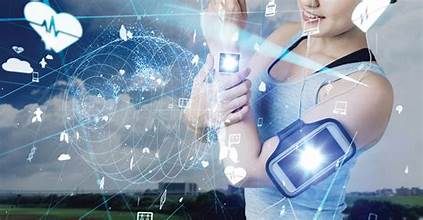Wearable technology,
often referred to simply as "wearables," encompasses a broad range of devices that can be worn on the body and are designed to collect data, provide feedback, or enhance various aspects of daily life. This field has seen significant advancements and diversification over the past decade, impacting sectors such as health, fitness, communication, and even fashion.

Types of Wearable Technology
Fitness Trackers: Devices like Fitbit or Garmin track physical activity, heart rate, sleep patterns, and other health metrics. These devices often come with mobile apps that analyze the collected data, allowing users to set fitness goals and monitor progress.
Smartwatches: Examples include the Apple Watch and Samsung Galaxy Watch. These devices not only track fitness metrics but also provide notifications, apps, and sometimes even cellular connectivity, allowing for a more integrated experience with smartphones.
Smart Clothing: Garments embedded with sensors can monitor biometric data such as heart rate, temperature, and movement. Examples include smart sports bras or shirts designed for athletes to optimize performance.
Wearable Medical Devices: Devices like continuous glucose monitors (CGMs) for diabetes management or wearable ECG monitors provide critical health data and can alert users to potential health issues.
Augmented Reality (AR) Glasses: Products like Google Glass and Microsoft HoloLens overlay digital information onto the real world. These devices have applications in fields such as healthcare, training, and entertainment.
Smart Jewelry: Items such as smart rings or bracelets can track fitness and health metrics discreetly while also serving as stylish accessories.

Key Features and Functions
Health Monitoring: Many wearables focus on health metrics, tracking things like heart rate, blood oxygen levels, stress levels, and sleep quality. This data can provide insights into overall well-being and help identify potential health issues.
Activity Tracking: Wearables encourage physical activity by tracking steps, workouts, and other fitness-related metrics. Gamification elements, such as challenges and rewards, motivate users to stay active.
Connectivity: Most wearables connect to smartphones or the internet, allowing for data synchronization and access to a broader range of apps. This connectivity enables notifications, messaging, and integration with smart home devices.
Customization: Users can often personalize settings, choose watch faces, or select specific metrics to track, allowing for a tailored experience that meets individual needs.
Benefits of Wearable Technology
Convenience: Wearables offer hands-free access to information and functionalities, reducing the need to check a smartphone constantly.
Health Insights: Continuous monitoring can lead to better health management, prompting users to make lifestyle changes based on their data.
Enhanced Engagement: The gamified aspects of fitness trackers can foster a sense of community and competition, motivating users to achieve their goals.
Real-time Feedback: Immediate data and alerts can facilitate timely decisions, especially in fitness and health scenarios.
Accessibility: Wearables can help individuals with disabilities or chronic health conditions by providing essential data and alerts.
Challenges and Concerns
Privacy and Data Security: The collection of sensitive health data raises concerns about privacy and the potential for misuse. Users must trust that their data will be protected and not shared without consent.
Battery Life: Many wearables need frequent charging, which can be a drawback for users looking for long-term usage without interruptions.
User Interface: Some wearables can have complex interfaces that may be challenging for less tech-savvy users.
Accuracy: The accuracy of health metrics can vary between devices, which may lead to misinformation or incorrect health assessments.
The Future of Wearable Technology
The future of wearables looks promising, with trends indicating further integration of AI and machine learning. These technologies could enhance data analysis, providing more personalized insights and predictions about health and wellness.
Advancements in Health Monitoring: Continuous innovations may lead to wearables capable of monitoring more complex health metrics, such as blood pressure or hydration levels, in real-time.
Integration with Other Technologies: Wearables could increasingly integrate with IoT devices, creating a seamless ecosystem that enhances smart living environments.
Fashion Integration: As wearables evolve, they are likely to blend more seamlessly with everyday fashion, becoming less obtrusive while maintaining functionality.
Expansion into New Markets: Industries like agriculture, logistics, and even education could adopt wearables to enhance productivity and efficiency.
Conclusion
Wearable technology is transforming how we interact with our health, fitness, and daily tasks. With ongoing advancements and increasing adoption, wearables are set to become even more integral to our lives, offering personalized insights and enhancing our overall well-being. As with any technology, balancing innovation with privacy and user experience will be key to the sustained success of wearable devices.



You must be logged in to post a comment.